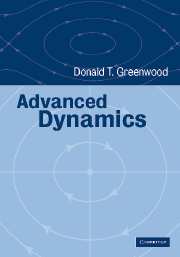1 - Introduction to particle dynamics
Published online by Cambridge University Press: 05 June 2012
Summary
In the study of dynamics at an advanced level, it is important to consider many approaches and points of view in order that one may attain a broad theoretical perspective of the subject. As we proceed we shall emphasize those methods which are particularly effective in the analysis of relatively difficult problems in dynamics. At this point, however, it is well to review some of the basic principles in the dynamical analysis of systems of particles. In the process, the kinematics of particle motion will be reviewed, and many of the notational conventions will be established.
Particle motion
The laws of motion for a particle
Let us consider Newton's three laws of motion which were published in 1687 in his Principia. They can be stated as follows:
I. Every body continues in its state of rest, or of uniform motion in a straight line, unless compelled to change that state by forces acting upon it.
II. The time rate of change of linear momentum of a body is proportional to the force acting upon it and occurs in the direction in which the force acts.
III. To every action there is an equal and opposite reaction; that is, the mutual forces of two bodies acting upon each other are equal in magnitude and opposite in direction.
- Type
- Chapter
- Information
- Advanced Dynamics , pp. 1 - 72Publisher: Cambridge University PressPrint publication year: 2003



